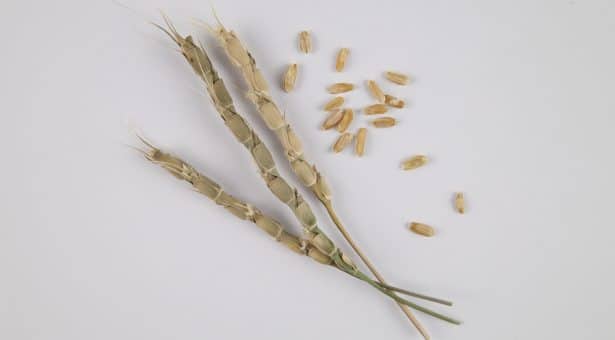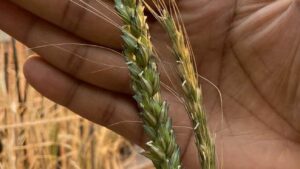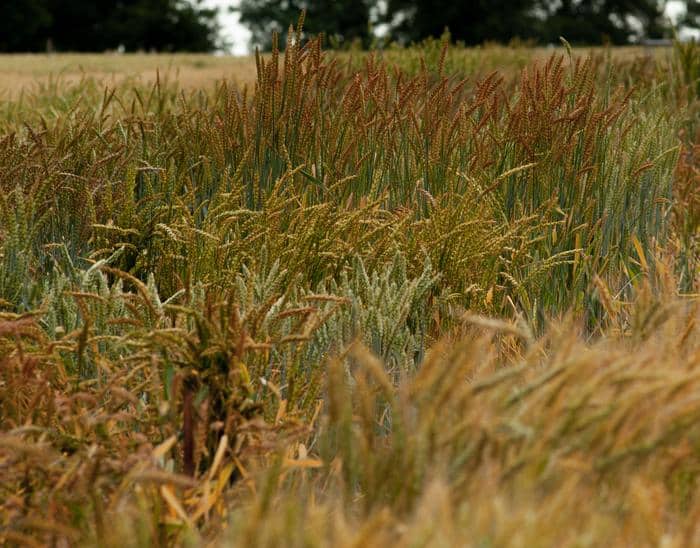A major international study has explained how bread wheat helped to transform the ancient world on its path to becoming the iconic crop that today sustains a global population of eight billion.
“Our findings shed new light on an iconic event in our civilisation that created a new kind of agriculture and allowed humans to settle down and form societies,” said Professor Brande Wulff, a wheat researcher at KAUST (King Abdullah University of Science and Technology) and one of the lead authors of the study which appears in Nature.
Professor Cristobal Uauy, a group leader at the John Innes Centre and one of authors of the study said: “This work exemplifies the importance of global collaboration and sharing of data and seeds across countries; we can achieve so much by combining resources and expertise across institutes and across international boundaries.”
According to research by the Open Wild Wheat Consortium (OWWC), the key to bread wheat’s success lies in the genetic diversity of a wild grass known as Aegilops tauschii.
Bread wheat is a complex hybrid that combines the genomes of three different wild grasses (A, B, and D) into a single plant, according to a press release from the John Innes Centre. The D-genome, which is essential for bread wheat, originated from Aegilops tauschii, an otherwise unremarkable weed. This grass crossed with early cultivated pasta wheat in the Fertile Crescent between eight and eleven thousand years ago.
The hybridization near the southern Caspian Sea triggered an agricultural revolution. Farmers swiftly adopted bread wheat for its adaptability and high gluten content, which makes for elastic dough ideal for breadmaking.
Its rapid spread is puzzling because, unlike other plants, bread wheat has no wild form. The introduction of the D genome, combined with the A and B genomes, created a genetic bottleneck, leaving bread wheat with much less genetic diversity than its wild relatives.
Given this bottleneck and the fact that wheat is an inbreeding species, meaning it primarily self-pollinates, one might expect bread wheat to struggle beyond its origins in the Fertile Crescent. Yet, it has thrived and been widely adopted across diverse regions.
To unravel this mystery, an international team assembled a diversity panel comprising 493 unique accessions of Aegilops tauschii, collected from a broad geographical range spanning from northwestern Turkey to eastern China.
From this panel the researchers selected 46 accessions reflecting the species traits and genetic diversity, to create a Pangenome, a high-quality genetic map of Aegilops tauschii, the release notes. Using this map, they scanned 80,000 bread wheat landraces – locally adapted varieties — held by CIMMYT and collected from around the world. This data showed that around 75% of the bread wheat D-genome is derived from the lineage (L2) of Aegilops tauschii which originates from the southern Caspian Sea. The remaining 25% of its genetic make-up is derived from lineages across its range.
“This 25% influx of genetic material from other lineages of tauschii has contributed and defined the success of bread wheat,” said Professor Simon Krattinger, lead author of the study.
“Without the genetic viability that this diversity brings, we would most likely not eat bread on the scale we do today. Otherwise, bread wheat today would be a regional crop – important to the Middle East but I doubt that it would have become globally dominant without this plasticity that enabled bread wheat to adapt.”
An OWWC study identified a unique Aegilops tauschii lineage (L3) in present-day Georgia, about 500 kilometers from the Fertile Crescent, which provides a crucial gene for dough quality. Researchers hypothesized that, like Neanderthal genes in humans, this historic introgression would be more prevalent in CIMMYT landraces.Analysis confirmed this: CIMMYT wheat landraces from Georgia contained 7% L3 introgressions, seven times more than those from the Fertile Crescent.
“We used the L3 tauschii accessions as a guinea pig to track and trace the hybridizations using 80,000 bread wheat landraces,” said Professor Krattinger. “The data beautifully supports a picture where bread wheat emerges in the southern Caspian, then with migration and agricultural expansion it reached Georgia and here with gene flow and hybridisations with the peculiar, genetically distinct and geographically restricted L3 accessions it resulted in the influx of new genetic material.
“This is one of the novel aspects of our study and it confirms that using our new resources we can trace the dynamics of these introgressions in bread wheat.”
The new open-source Aegilops tauschii pangenome and germplasm provided by the OWWC not only helps solve this biological mystery but is also being used globally to discover disease resistance genes and climate-resilient traits for wheat. Researchers at the John Innes Centre and KAUST are using bioinformatics to track DNA contributions from the L3 lineage of Aegilops tauschii to bread wheat.













